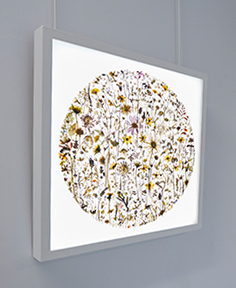Radiotherapy |
A29
|
What is Radiotherapy?
 Radiotherapy can be used to treat cancerous and non-cancerous tumours in almost any part of the body. Radiotherapy uses high energy radiation, usually X-rays or electrons to treat disease.
Radiotherapy can be used to treat cancerous and non-cancerous tumours in almost any part of the body. Radiotherapy uses high energy radiation, usually X-rays or electrons to treat disease.
Radiotherapy stops cancer cells from dividing properly and as a result they are destroyed. However it will also affect normal cells which can usually repair themselves.
When normal tissue is affected it causes side effects. Most side effects are temporary. Your Oncologist will advise you on any short term or long term side effects that may be caused by the treatment.
Radiotherapy Treatment
Treatment is tailored to individual needs and carefully planned to ensure minimal healthy tissue is affected. Treatment may be referred to as radical treatment or palliative treatment.
Radical treatment is a curative treatment that aims to give long term benefits. Radiotherapy may be given alone or it may be given alongside surgery, chemotherapy or hormone therapy.
Palliative treatment aims to prolong life or improve quality of life by shrinking tumours, reducing pain or relieving other cancer symptoms.
Types of Radiotherapy
There are two main types of radiotherapy, external and internal:
External radiotherapy
This is where radiation comes from a machine outside of the body.
This is the most common type of radiotherapy and can be given as a single treatment or as a course of treatment over several days or weeks. Each treatment takes several minutes and is painless. External radiotherapy doesn't make you radioactive and you are safe to mix with other people, including children.
Internal radiotherapy
This is where the radiation comes from implants or liquids placed inside the body.
Brachytherapy is treatment in which solid radioactive sources are placed inside a body cavity or needles are placed in the tumour. This is usually given on an outpatient basis but may involve staying in hospital for a few days until the radioactive source has been removed.
If the Oncologist has recommended this treatment it will be performed at the Bristol Haematology and Oncology Centre (BHOC).
Prostate brachytherapy is performed at RUH. The radiographers at the Royal United Hospital will ensure all arrangements are made and will fully explain the procedure to you prior to your appointment at the BHOC.
Occasionally, with internal radioactive treatment or with treatment with radioactive 'seeds', you will be emitting a certain amount of radioactivity for a few days. This is why there may be temporary restrictions on your movements and visitors. This will be carefully explained to you.

